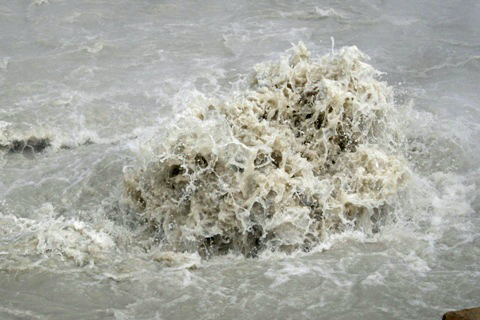After Upper Geyser Basin, we began to drive down the road toward Yellowstone Canyon through West Thumb. So called West Thumb because of its shape, it is an extension of Lake Yellowstone.
Where the road from Upper Geyser Basin meets the Road at West Thumb, a geyser basin exists. Called West Thumb Geyser Basin, it has roughly 20 geothermal features.
However, it did not look all that interesting. So, after visiting the visitor's center and getting information, we moved on.

The next stop was the Mud Volcano Area. The mud volcano area was one of the most bizarre areas in the park. Its extremely hard to do just to it through words. There were places where there was boiling, super fluid mud.
One of the better known attractions of this area is Dragon Mouth Spring.Dragon's Mouth is a turbulent hot spring with a cavernous mouth. Water sloshes rhythmically in and out of the cavern giving the impression of a large overflow; however, the actual discharge is quite small. Much of the activity and energy is located within the cavern. As hot water rises to the surface, hydrogen sulfide, carbon dioxide, and water vapor gases expand creating a pressure explosion in the cavern. The resulting activity is sloshing, belching, and steaming.
The 1871 Hayden Expedition named this thermal feature. At that time Mud Volcano was a very active mud spring with bellowing and exploding mud. In later years since its discovery it has not shown the same forcefulness. It has since been a quiet caldron with occasional churning caused by rising gases.
The Sulphur Caldron in Yellowstone National Park is one of the park’s most acid hot springs, with yellow and turbulent waters reminding one of an evil witch’s brew. It is almost as acidic as battery acid, but is a pool of life all the same. Bacteria live within the ultra-hot waters, creating the colors you see.



